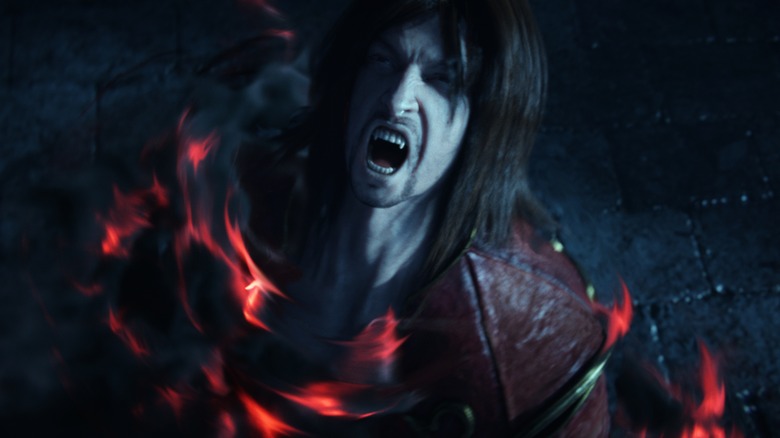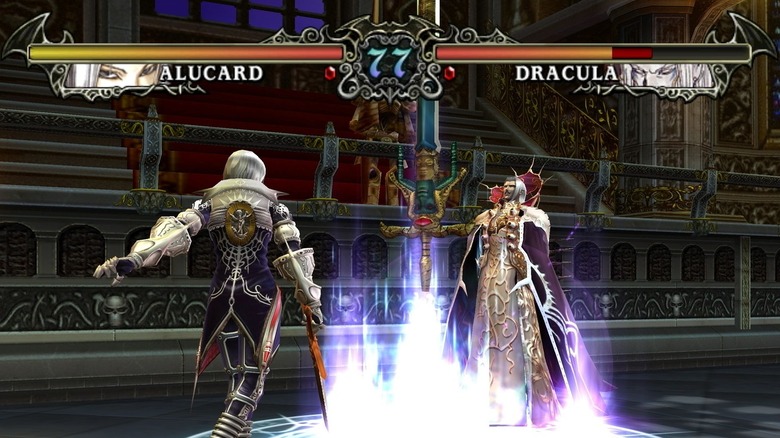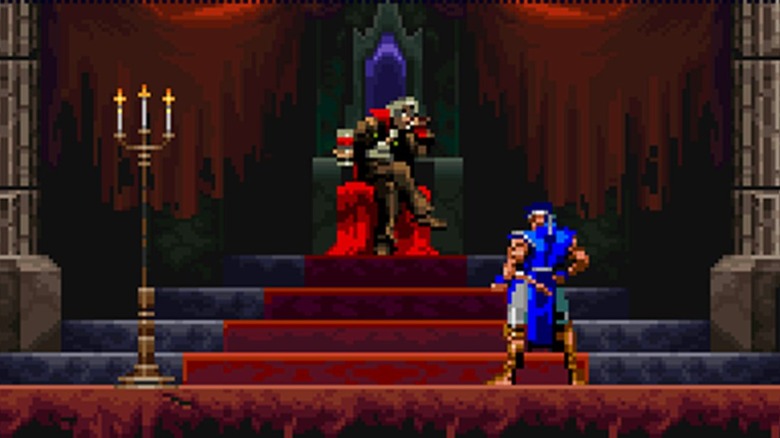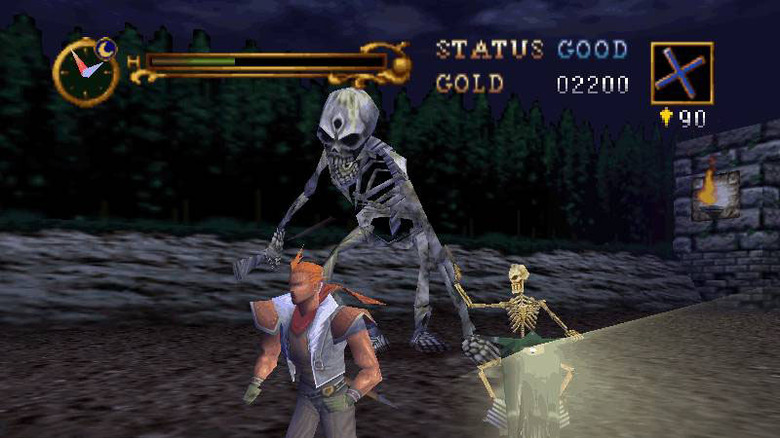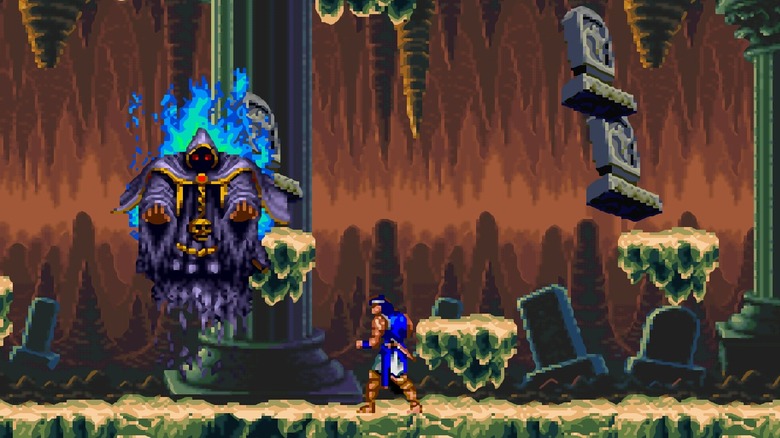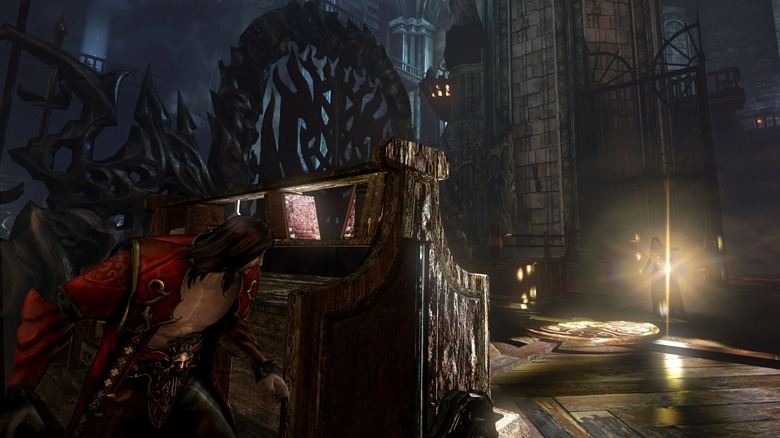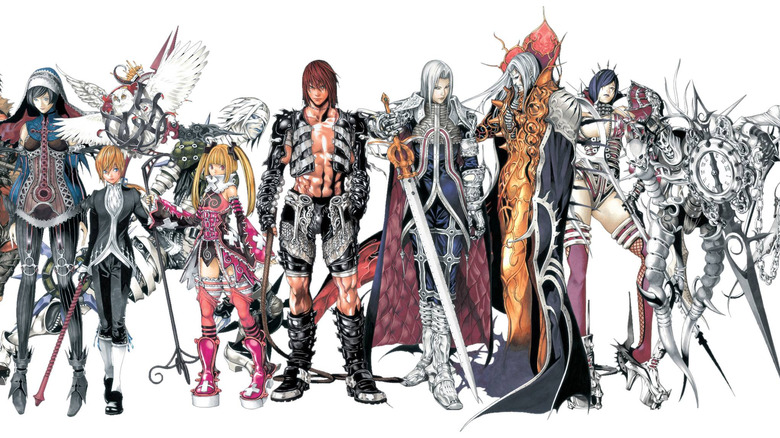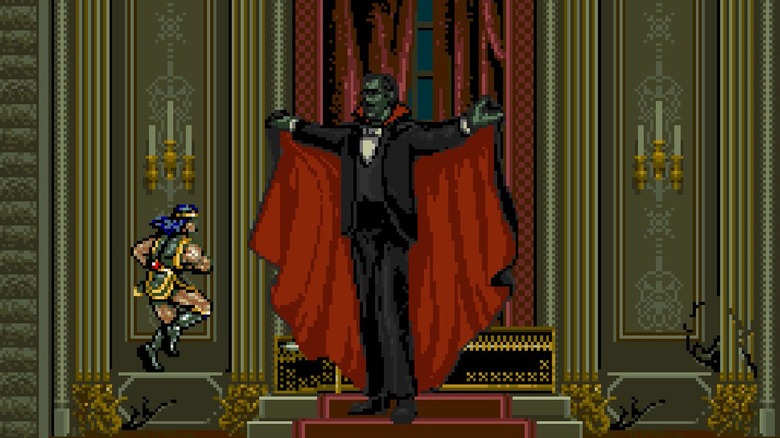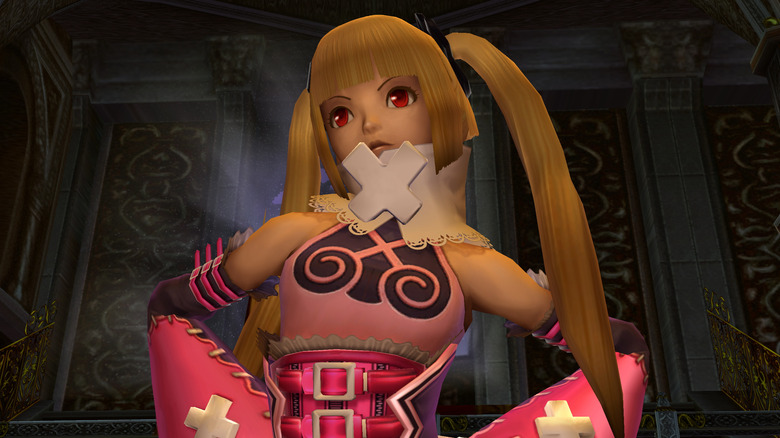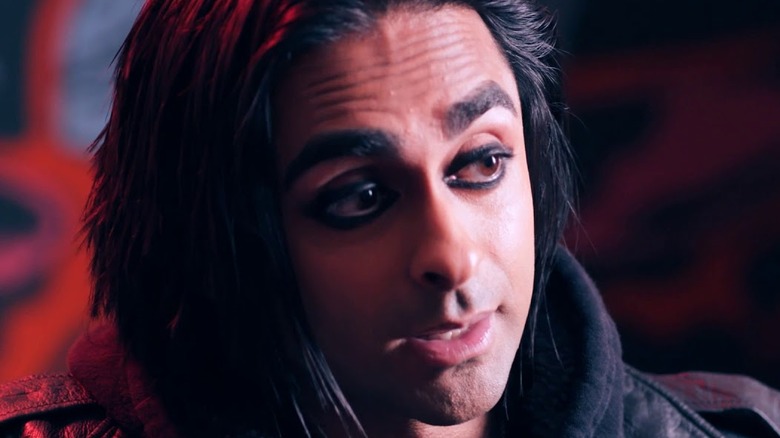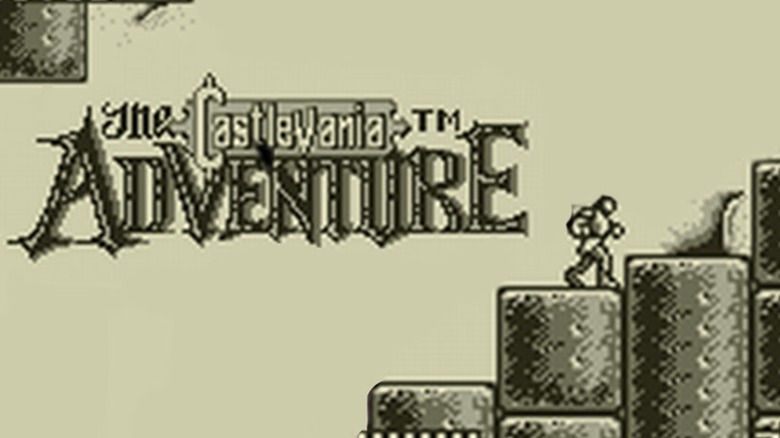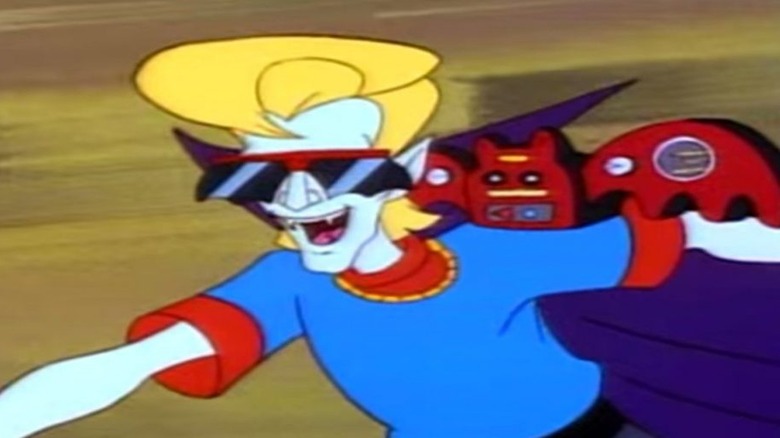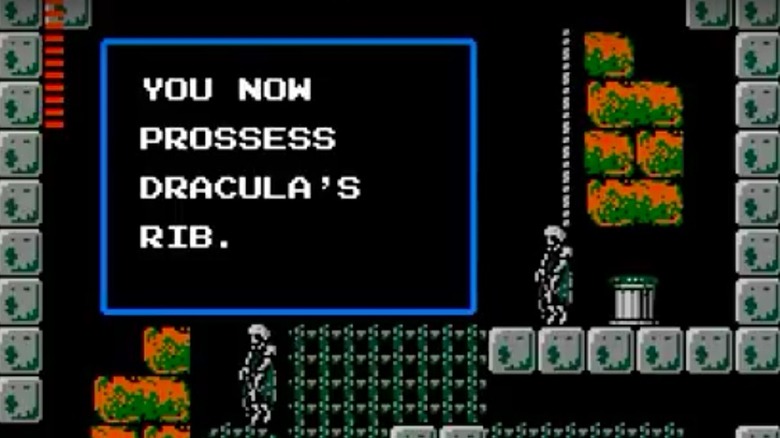The Worst Crimes Committed Against Castlevania
The Castlevania franchise is legendary in more ways than one. Its long, sprawling mythology has made its way into nearly three dozen games and is the subject of a wildly popular animated adaptation on Netflix. The long-suffering Belmont family has made it their divine mission to eradicate Dracula and his line, and players have been more than happy to shepherd that clan through decades of dungeons and monsters.
Still, as with any series that has lasted through multiple decades and hopped from console to arcade to handheld, not every Castlevania title is perfect. Even in the best entries of the franchise, there are little blemishes that keep them from being the transcendent experience that gamers hope for when they return to the blood-soaked streets of Wallachia. However, there are also a few Castlevania games that are total abominations, deserving of a crack of the Vampire Killer whip. Let's drag these issues out into the sunlight and discuss the worst crimes ever committed against the mostly excellent Castlevania series.
Castlevania Judgement's motion controls
The Castlevania franchise's first (and so far, only) fighting game has its fair share of problems, but the biggest issue may be the control scheme. Since it was released on the Wii, Castelvania: Judgement was naturally designed with motion controls in mind. This led to some interesting design challenges, according to Castlevania producer Koji Igarashi: "I wanted to appeal to a broader audience than the general fighting-game crowd. There's also the issue of the Wii controller. It's difficult to do those sorts of precise movements when you're waving something around."
The result is a game that essentially plays smoothly for no one at all, whether they're hardcore fighting game fans or more casual players. More often than not, players ended up flailing their Wii Remote around in an attempt to even get their character to face the right direction. These issues led reviewers like Nintendo World Report's Zachary Miller to recommend that players ditch the Wii Remote entirely and instead use the Wii Classic Controller. With weak controls like these, Judgement may have been better off as a traditional Castlevania game. Then again, that'd be a whole lot of motion-control whipping, huh?
A Symphony of new voice acting
Castlevania: Symphony of the Night is regarded as not only the best entry in the Castlevania series, but as one of the greatest games of all time. Even with that distinction, it's not without its issues. The original English translation of the game contained some fairly nonsensical dialogue and hammy voice acting, but that's part of the fun. In particular, Dracula's speech about man being a "miserable pile of secrets" has become a bit of a meme within the gaming community.
As silly as the dialogue was, there was some disappointment when subsequent re-releases of Symphony of the Night used a different English script and voice cast. While it has been noted that the newer localization was closer in tone and intent to the Japanese original, it's easy for fans to miss the goofiness they remember from their first playthrough. As Attack of the Fanboy put it in their review of SoTN's re-release, "The quality of the voice acting isn't all that much better, and the experience isn't improved in the slightest. On the contrary, it actually mars it. There's a loss of charm."
The evil camera of Castlevania 64
Look, 1999's Castlevania — sometimes referred to as "Castlevania 64," since it was on the Nintendo 64 — is not a great game. The controls are wonky, the maps are repetitive and confusing, the combat was much more simplistic than the complex Symphony of the Night that preceded it, and the bright color palette doesn't exactly scream "gothic adventure." However, the worst offense in this game is the terrible camera, which is almost a greater enemy to the player than Dracula himself.
In their review of this title, GameRevolution said: "Like a 7 year-old on Pixie Stix, the camera will occasionally just go nuts, running around the character. Getting a good view of the action is almost impossible, so players find themselves just making due with a bad camera angle. This, of course, often leads to death." Players already had enough obstacles to deal with, like loads of reanimated skeletons and a demonic salesman (no, really), without also having to put up with a camera that almost consistently obscured what the player was trying to look at or reach.
Butchering Rondo of Blood
Castlevania: Rondo of Blood was an impressive game that doubled down on everything gamers loved about the preceding installments but also cranked it all up to 11. This game, which followed Richter Belmont and Maria Renard's battle against Dracula, was released as a CD-ROM title in Japan. Konami was faced with the unenviable task of paring down this complex title into one that would fit on a 16-bit cartridge for its Western release on the Super Nintendo.
As explained by The Cutting Room Floor: "The redbook audio and voice-acted cutscenes were the first things to go, but that was not enough to fit in everything else. Rather than cut a few stages and keep the rest, Konami decided to make up all new ones for this version. That still wasn't enough, so Maria was cut as a playable character as well, reducing her to a mere NPC ... The result is a conversion that only vaguely resembles the original."
This resulting game was Castlevania: Dracula X, which is known for being almost absurdly difficult. Sadly, the original, more highly-regarded Rondo of Blood didn't see an official North American release for quite some time.
Lords of Stealth
The sequel to Castlevania: Lords of Shadow continued the wild storyline and hack-and-slash gameplay but made the mistake of including several half-baked stealth sections. Having Dracula going all Solid Snake on an old castle certainly isn't the silliest thing the franchise has done, so it could have worked in theory.
But there are problems. One is that the stealth sections all play somewhat differently, with objectives that seem purposefully obfuscated. Seriously, you have no idea that you're playing this part of the game "wrong" until you get killed for something as banal as stepping on leaves. Other sections require you to cause distractions for your enemies, which are marred by the terrible aiming controls and twitchy enemy AI, while still others necessitate Dracula turning into a rat to find and flip switches, which Rock Paper Shotgun notes "is about as fun as it sounds."
These sections can be so frustrating that "what should been 10-15 minutes of tension turned into 4-5 hours of silent screaming," according to Kotaku. Again, the concept of stealth mechanics in a Castlevania game isn't necessarily a bad thing. Unfortunately, the execution in LoS2 leaves a lot to be desired.
The bonkers redesigns of Judgement
Takeshi Obata is a celebrated manga illustrator who is probably best known for his work on Death Note. Unfortunately, his character redesigns for Castlevania: Judgement were uniformly garish, with leather straps and unnecessary spiked armor being the order of the day. Obata was chosen, according to Koji Igarashi, as a way of appealing to younger gamers. Needless to say, it backfired, with Bad Game Hall of Fame going so far as to say, "It was almost impossible to recognize [characters] without the added assistance of their names appearing under their health bars."
While the idea of bringing together the many timelines of the Castlevania series for one big battle is interesting, the core concept is actually rendered nearly pointless by these new designs. Destructoid's Jonathan Holmes made a great point when he said: "The thing is, an 'All-star fighting game' with completely redesigned characters completely negates the purpose of the all-star experience. If I don't recognize this Simon Belmont, this Dracula, and this Alucard as being the same guys I've seen in Castlevania games for years, why would I care about seeing them all together in the same game?"
The coin-eating mechanics of Haunted Castle
While not quite as well known in the United States, Haunted Castle was an impressive arcade spin-off that took full advantage of the extra hardware afforded it by an arcade cabinet, with big action set pieces that wouldn't have been possible on the NES.
The thing standing in the way between Haunted Castle and greatness, besides its absurd level of difficulty, is how it quite literally gave players a run for their money. See, Haunted Castle only gives players one life, but handles continues very differently from many other arcade games. In an interesting twist on the usual quarter-munching of arcades, players could insert coins to boost the health meter of their character. That's right: you paid to stay alive. Using one of these health boosts, however, would expend one of the players' continues, of which the game allowed a maximum of three.
It's hard to think of another franchise that would feature such a bonkers, almost counter-intuitive mechanic. Imagine if you had to sacrifice one of your Pokémon every time you healed another one with a Potion. Now imagine it cost real life money to do that. Now that's scary.
Judgement's treatment of Maria
First introduced in Rondo of Blood, Maria Renard is a teenage vampire slayer who occasionally aids Richter Belmont in doling out justice against the undead. Think of her as a medieval Buffy the Vampire Slayer and you've got some idea of what a capable and badass character she really is ... which is why the version of her presented in Castlevania: Judgement is such a downright insult, both to fans and to Maria herself.
Judgement's Maria has significant body image issues, with one area in particular that she seems self-conscious about. She compares her chest size to that of the other female fighters she goes up against and seems fairly preoccupied with the idea of winning this tournament in order to get the body she desires. She literally joins the battle because she thinks she'll "get a present." This is all played for laughs, mind you. While this version of Maria is meant to be younger and less mature than the one we see in Symphony of the Night, it's almost impossible to reconcile the silly, over the top characterization of Judgement with the strong woman who once cared for Alucard in his darkest moments.
Adi Shankar's near-miss film adaptation
If the name Adi Shankar sounds familiar, that's because he's a film producer who has essentially dedicated his career to bringing nostalgic properties to the screen in interesting ways. In addition to a number of high-profile fan films affectionately dubbed as the "Bootleg Universe" and the upcoming Devil May Cry television series, he's the showrunner and executive producer on Netflix's animated Castlevania series.
However, we almost received a very different, very wrong Castlevania on the big screen. Shankar revealed in an interview that he was approached by a major studio with the prospect of making a live-action Castlevania movie in 2012. The catch was that this unnamed studio wanted the Belmonts to be American characters, even going so far as to suggest Channing Tatum for the lead role.
To Shankar's credit, he walked away from "a lucrative deal" because he didn't believe in the version of the project that this studio wanted. According to Shankar, "I passed on that opportunity because I didn't feel like that group wanted to make an authentic Castlevania movie." His decision ultimately paid off when Castlevania hit Netflix in 2017 to positive fan reaction.
An auto-scrolling 'Adventure'
It's easy to knock on early Game Boy titles. While the prospect of having a full game on a handheld device was mind-blowing back in the day, many franchises lost a bit of "oomph" when they made the jump to the portable system. However, the most glaring examples of this loss in quality is probably The Castlevania Adventure, which plays out like a truncated and dumbed-down version of the first NES game.
The biggest problem was the slow movement of the player character. Simon Belmont walked and jumped through the castle like he was swimming through honey. This became a real pain in the game's third stage, which featured auto-scrolling sections, forcing the player to make split-second decisions every step of the way as a wall of spikes approached, effectively making the already difficult handling almost insurmountable. In these infuriating auto-scrolling sections, platforming with the gravity-addled Simon of The Castlevania Adventure is beyond challenging. The original Game Boy was strong enough to withstand bomb blasts, but it's a safe bet that this game caused more than a few people to try to destroy their little grey brick.
The Captain N adaptations
Captain N: The Game Master was an animated television series that ran for three seasons in the late '80s and early '90s, featuring multiple characters from popular Nintendo games interacting with one another. That sounds pretty awesome in theory, but the unfortunate thing is just how loosely it tended to adapt these characters. Pit was called "Kid Icarus," Mega Man was diminutive and green-colored, while Mother Brain was talkative and full of wisecracks.
However, none of these characters were realized quite as embarrassingly as the cast of Castlevania. The Captain N version of Simon Belmont is "incredibly vain, egotistical, and opportunistic ... [he] can be cowardly when he fears for his safety." He's obsessed with his own appearance and keeps a mirror handy at all times. In other words, he was nothing like the selfless champion of the game series. Meanwhile, Dracula's son, Alucard, was portrayed as a "radical dude" type, complete with a boombox, shades, and skateboard. It was all probably a bit too silly even for the kids watching at the time, but for fans of the games, it's just embarrassing.
Simon's Quest for proper instructions
You all knew this one was coming, right? Castlevania 2: Simon's Quest is often (somewhat unfairly) the punching bag of the franchise, with gamers frustrated by the sequel's deviations from much of what worked in the first game. While Simon's Quest does have its defenders these days, there's one glaring aspect of the game that is not up for debate: the English localization is an abject nightmare.
Simon's Quest is famously much less linear than its predecessor, taking on more RPG elements and encouraging puzzle-solving and exploration. However, with such famous examples of broken, poorly-translated dialogue as "Get a silk bag from the graveyard duck to live longer," it's often difficult for players to know exactly what the heck they're supposed to do next. Remember, kids, there was a time before the internet, when gamers had to figure this junk out for themselves (unless, of course, they were lucky enough to find an issue of Nintendo Power covering their specific problem).
So, yes, Simon's Quest is actually a lot better than its reputation would suggest, but its dialogue and story are exactly as dire as you've heard.

